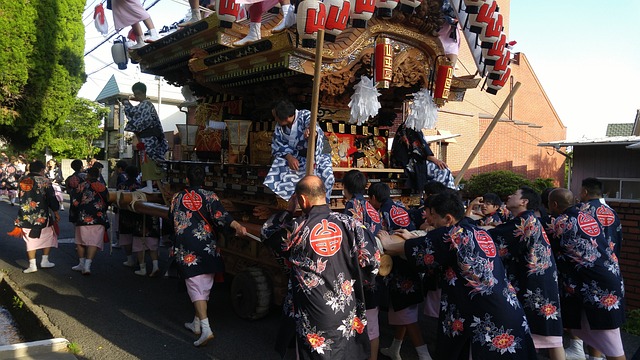Japan is widely known for its festivals or matsuri. Typically celebrated annually, many of these stunning events have been celebrated for decades, centuries even! Steeped in tradition and history, experiencing matsuri in Japan is the perfect way for visitors to get a glimpse of how rich and deep Japanese culture is.
Aside from being widely celebrated events, matsuri in Japan incorporates well-preserved customs. These traditions have been passed on from generation to generation, creating an effective bridge between modern Japan and its distant past. What’s even more notable is how most Japanese people are still very much involved in these celebrations. Festivals in Japan are very much part of the local communities they are celebrated in. That alone makes these events more than worth experiencing.
High energy festivities
Besides, there is nothing like the high energy of being part of a matsuri! The Japanese are at their liveliest when taking part in these festivals. How they are celebrated tends to vary considerably. What’s common though is that there will be lively processions of people carrying floats or mikoshi. These portable shrines are often carried by a group of men with vigorous participants joining in on the dancing and the chanting.
As such, matsuri in Japan are aplenty and it can be a bit confusing for the first-time visitor to decide which ones to see. We’ve got you covered! As the country is known to celebrate several festivals all year round, we’ve rounded out our top picks of some of the most fun, spectacular, and jaw-dropping festivals you should never miss when visiting Japan.
How is matsuri celebrated in Japan?
The reasons for celebrating matsuri can vary significantly, depending on where it’s celebrated. Most of the time, it is dedicated to a local deity. In some cases, it is celebrated for good fortune, to bring about good harvests, to ask for self-fulfillment, or to even pray for goodness sake. It’s quite common for these celebrations to be intense and passionate but they can also be peaceful and relaxed.

Big city celebrations
Many of the very prominent festivals in the country are celebrated in big cities during winter or summer. However, many of these events are also celebrated by smaller localities and towns. Regardless of how big or small these festivals are, what stands out is how each tends to hold a distinct charm that makes each a worthy event to experience.
Annual events
It’s quite common for most festivals to run annually. Although some are celebrated semi-annually. Often, they are hosted by a local shrine with celebrations running for a few days, a few weeks, or even a full month! Festivals are widely celebrated all across Japan and it’s estimated that there could be as many as 300,000 matsuri in the country!
Colorful costumes and scrumptious street food
Then there are of course the colorful costumes that local participants wear to take part in these events. It’s common for the locals to don a yukata or kimono while witnessing the parades. Pop-up stalls will usually surround the festival route selling a variety of goods from Japanese street foods and drinks to toys and souvenirs. It’s quite common for festival watchers to witness the festivities while munching on their favorite snacks including yakisoba, okonomiyaki, karaage, and a whole host of other festival treats!
Portable shrines
A very prominent part of a matsuri is the portable shrine or mikoshi that is carried on the shoulders of the participants during the procession. It is believed that the shrine carries the deity the festival is dedicated to. Typically, the participants will carry the float around the neighborhood. During the procession, it is also common for participants to perform group dances and chants, and carry out performances using traditional Japanese instruments. Effigy burning is also part of some celebrations.
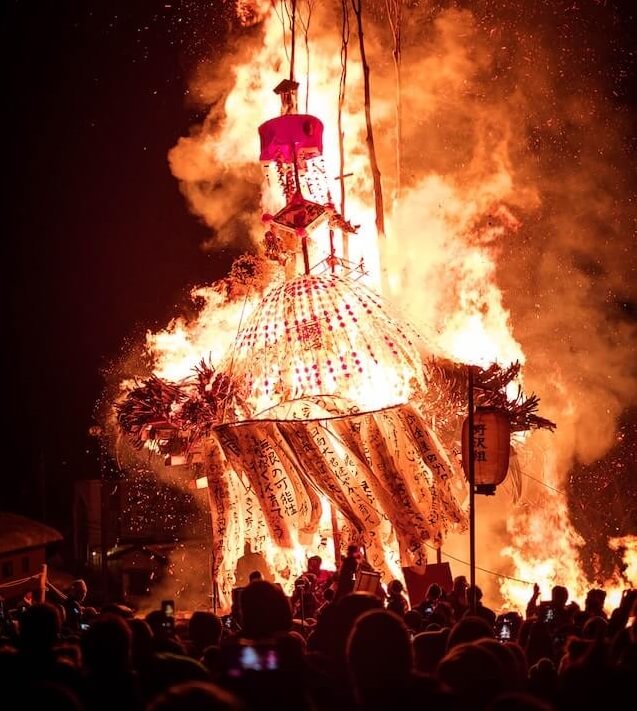
Top matsuri to experience in Japan
Kanda Matsuri
One of the three major festivals that Tokyo is known for, the celebrations for Kanda Matsuri are centered around Kanda Myojin Shrine in Tokyo. Along with Tenjin Matsuri in Osaka and Gion Matsuri in Kyoto, Kanda Matsuri is considered one of the top three major festivals in Japan.

Celebrations usually span an entire week — the highlight of which is the parade along the districts in central Tokyo. The procession is accompanied by a mikoshi and goes around the Kanda, Otemachi, Marunouchi, and Nihonbashi areas. The festival is said to date back to the Edo period and was celebrated to showcase the prosperity of the capital.
The present-day festival is celebrated to bring about prosperity and good fortune. So, if you’re a bit down on luck, it might be a good time for you to turn things around and witness Kanda Matsuri. Also, this is not an annual festival and is only celebrated during years with odd numbers. It also boasts some of the largest matsuri processions, which is even more reason to see it!
Aomori Nebuta Matsuri
Aomori’s Aomori Nebuta Matsuri is a fire festival that involves around 20 nebuta or massive lantern floats being paraded down the streets. The floats are inspired by mythical Japanese stories and traditional kabuki which get all lit up during the festivities.
Nebuta dancers can be seen accompanying the procession and performers playing traditional drums and flutes also form part of the parade. It’s a popular festival that is celebrated not only by the locals but by visitors as well. The annual celebration often sees a staggering number of visitors heading to Aomori, estimated at around three million.

The annual festival usually takes place between August 2 and 7 and every evening will often have floats and parades scheduled. It’s also one of the most important festivals in the country. In 1980, it was given the distinction of being an important Tangible Folk Cultural Property. A must-not-miss part of the celebration is the final day when the floats are loaded on boats along the bay as they are sailed around while stunning hanabi is on display overhead.
Sanja Matsuri
Another Shinto festival from Tokyo, this boisterous event is celebrated in the Asakusa district every third Sunday of May. Drawing around two million visitors for its three-day duration, it certainly deserves the reputation of being one of the capital’s largest Shinto celebrations.
The festival is celebrated to honor the founders of Senso-ji Temple. The founders are enshrined in the nearby Asakusa Shrine, which is only a few steps away from the temple. According to stories, the founders caught a statue of Bodhisattva Kannon in the Sumida River in the 7th century. They’ve been dedicated followers of Buddhism since.
Relatively raucous, festival celebrations see the Tokyo streets flooded with people chanting along with taiko drummers and flute players. The height of the festival is on Sunday when three mikoshi are carried to the streets and then laid to rest at the Asakusa shrine. It is believed that the more boisterous the chanting and the music and the harder the mikoshi gets shaken, the more luck the areas where the parade passes by get.
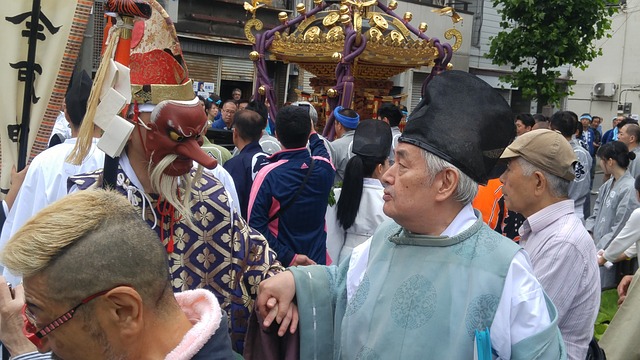
Awa Odori
Tokushima’s Awa Odori is known as Japan’s largest dance festival. The festivities take place for several days around mid-August and has a history of more than 400 years. It is one of the three great festivals celebrating Bon Odori in the country.
The festival showcases “ren” dancers which are groups of choreographed dancers. They typically come in varying sizes including local amateur ren, as well as groups made up of company employees and even school children. Every ren has a women’s and men’s dance where the women wear “yukata” with wooden clogs or “geta” and straw hats or “amigasa”, and the men wear “happi” and socks.
During the dance performance, the men’s dance is known for being dynamic and intense. The women’s part, however, is more elegant and refined. Another thing that sets the matsuri apart is its festival music. The distinctive duple-time music is produced by a “narimono” band using a variety of instruments such as taiko drums, bells, shamisen, and flutes.
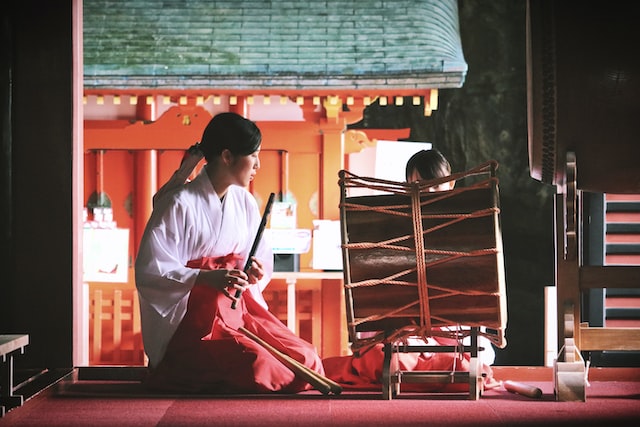
Sendai Tanabata Matsuri
While tanabata or star festival is a widely known festival celebrated around the country, Sendai’s edition is considered the largest in the country. The annual festival takes place in August with the festivities taking place in the downtown Sendai area.
During the celebration, colorful streamers reaching up to 5 meters can be seen strung around the main shopping arcades in the city. Community groups, local shops, schools, and even businesses craft these decorations.

While the colorful pretty streamers are a sight to behold in itself, the festival also comes with a plethora of fun traditional dances and live music performances. There’s plenty of scrumptious street food to be had from one of the many pop-up stalls in the area. Then there is the spectacular fireworks display to kick off the celebrations.
Gion Matsuri
One of Japan’s best-known festivals, Gion Matsuri is also possibly the country’s largest! The festival dates back to 869 and is typically celebrated for the entire month of July. The celebrations culminate with a float parade on July 17th, which is known as Yamaboko Junko.
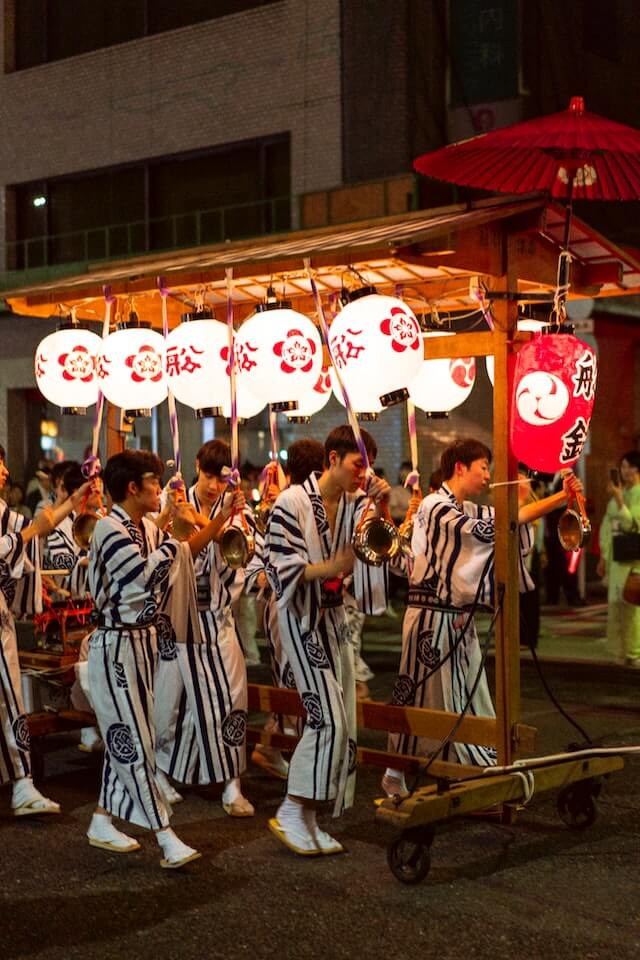
The annual festival is hosted by the Yasaka Shrine in the Gion District of Kyoto. Along with Osaka’s Tenjin Matsuri and Tokyo’s Kanda Matsuri, they form three of the top matsuri in Japan. During the festival highlight or Yamaboko, 33 large floats are paraded in a procession along the streets of Kyoto. What’s even more notable is how 29 of these floats are designated as Important Tangible Cultural Properties in the country.
What’s great about the festival is how it is celebrated for an entire month. As such, it has something to offer for every visitor who wants to experience it. Fringe events are also carried out leading to the festival highlight. This includes stunningly decorated folding screens displayed in the many machiya townhouses around Kyoto. You can even see locals decorate the ornate floats. If you ever find yourself in Kyoto in July, go beyond just spotting a geisha and experience Gion Matsuri instead!
Tenjin Matsuri
One of the most famous festivals in vibrant Osaka, Tenjin Matsuri is associated with the city’s Tenmangu Shrine. The festivities are aimed to honor Sugawara no Michizane, the shrine’s deity. He is worshipped as the god of learning and scholarship.
The festival is typically kicked off with rituals performed on the grounds of Tenmangu Shrine. The next day, two processions take place — on water and land. People participating in the land parade don their colorful costumes with some decked as lion dancers, and others as characters. Actual musicians also take part in the procession.
Two portable shrines are then brought to the Okawa River where they get loaded onto boats in the evening. The procession then continues on water. Special performance boats also form part of the festivities, culminating with a fireworks display. The water procession is what makes this celebration unique from the rest. Festival participants should look out for bunraku and noh performers as they sail through the river.
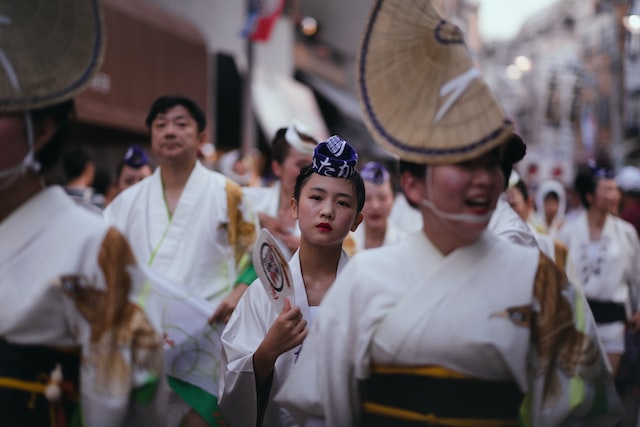
Chichibu Yomatsuri
Saitama has its very own annual festival tied to its Chichibu Shrine. Known as Chichibu Yomatsuri, locals have been celebrating the event for more than 300 years. Due to its rich history, the festival earned the designation as an Intangible Cultural heritage by UNESCO.
Chichibu Yomatsuri is known for its massive floats with ornate designs. During the evening procession, four large floats can be seen moving down the streets with kasaboko or smaller floats accompanying them. During the procession. Lively music from the taiko drums and flutes can also be heard throughout.
The festival is quite popular and the procession route can get swamped with onlookers. Most attendees do love the fact that it is only about an hour and a half away from the capital. The spectacular fireworks display on the final day of the festival is also a crowd favorite. Hanabi is typically a summer thing in Japan. However, Chichibu Yomatsuri takes place in early December. Fireworks in the winter are certainly something rare, which is why a lot of people flock to Saitama to join in on the fun.
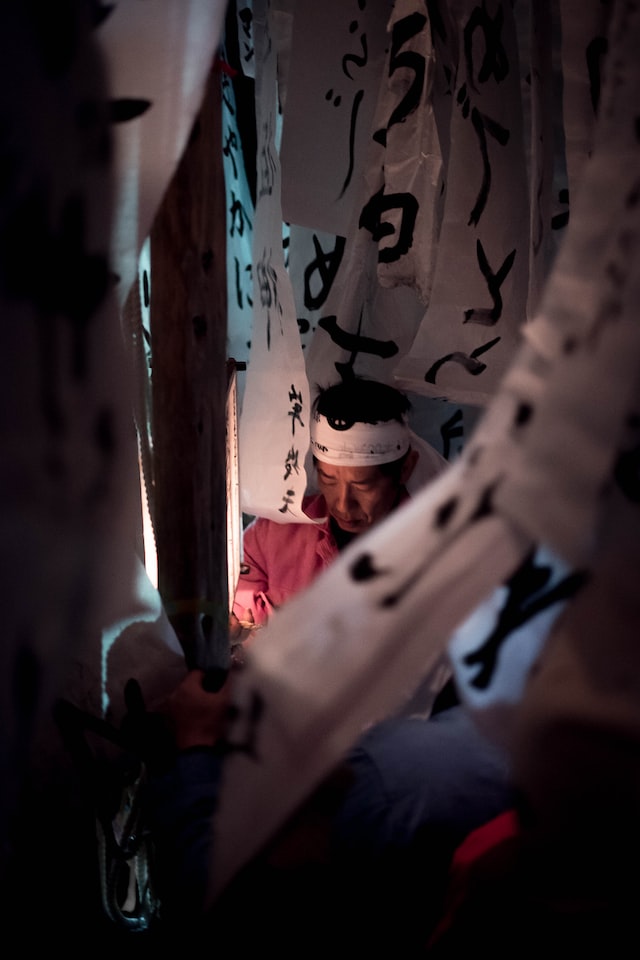
Aoi Matsuri
Kyoto’s Aoi Matsuri is associated with one of its oldest Shinto shrines, Kamigamo Shrine. Also known as Kamo Matsuri, the festival is known for being elegant and ornate. The festivities involve a procession from the Kyoto Imperial Palace and ends at the Kamigamo Shrine.
Festival participants don elaborate costumes from the Heian period. Some people join the parade on horseback while some are on carriages drawn by oxen. The rest of the festival participants walk the distance from the imperial palace to the shrine on foot while Heian court music can be heard playing throughout.
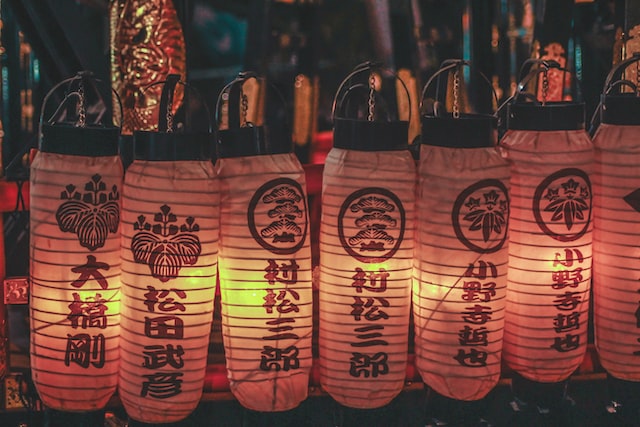
The festival’s origins are thought to predate even the Heian period. Many believe that the celebrations may have even existed as far back as the 6th century. At the time, the then-emperor Kinmei practiced delivering offerings to the Kamigamo Shrine to ward off natural disasters from devastating the city. During the Heian period, this became an elaborate procession. Equestrian races and other events precede the festival parade.
Visit the land of matsuri
Japan is a land of incredible festivals and cultural celebrations that are an integral part of the country’s identity and a must-see for anyone interested in exploring the country’s unique culture. From the electrifying energy of the Gion Matsuri in Kyoto to the mesmerizing beauty of the Awa Odori in Tokushima, there are countless must-experience matsuri in Japan that will leave you in awe. It’s an opportunity to witness a living history and experience firsthand the vibrancy, excitement, and joy that is at the heart of Japanese culture.
